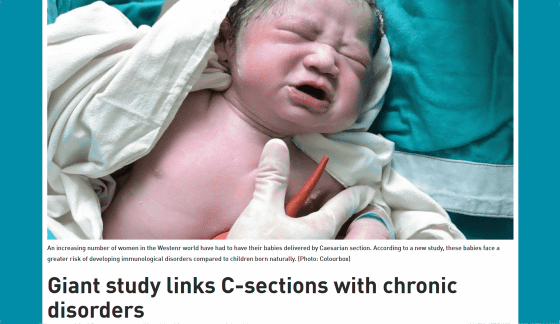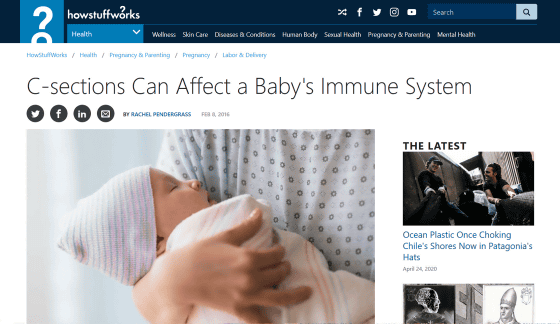Possibility that human immune cells have 'memory of bacteria and viruses that have never been infected'

by
The human immune system, which fights against bacteria and viruses, has a mechanism to effectively eliminate pathogens when it is infected next time by 'memory' when it was infected or vaccinated in the past. However, recent studies suggest that some immune cells may have 'memory of bacteria and viruses that have never been infected'.
Virus-Specific CD4 + Memory-Phenotype T Cells Are Abundant in Unexposed Adults: Immunity
https://www.cell.com/immunity/fulltext/S1074-7613(13)00052-6
Immune systems of healthy adults 'remember' germs to which they've never been exposed, Stanford study finds | News Center | Stanford Medicine
https://med.stanford.edu/news/all-news/2013/02/immune-systems-of-healthy-adults-remember-germs-to-which-theyve-never-been-exposed-stanford-study- finds.html
CD4-positive T cells (helper T cells) that express the CD4 antigen on the cell surface recognize a part ( epitope ) of microorganisms and viruses that have invaded blood, lymph tissue, etc., and attack other immune cells. Has the role of sending.
Once in contact with some pathogen, helper T cells continue to remember it as ' memory T cells ', and when the same pathogen invades again, they immediately respond to stimulate other immune cells. On the other hand, ' naive T cells ' that have not yet come into contact with the antigen are prepared for when a new pathogen invades. When naive T cells encounter an unknown pathogen, it takes days or weeks for the immune system to mobilize to fight the pathogen, but memory T cells can trigger a full-scale immune response in hours. It seems possible.

by
Stanford University immunologist Dr. Mark Davis 's research team in a 2013 study collected blood samples rich in immune cells from 26 adults and 2 newborns and found that they have epitopes on various virus strains. We conducted an experiment of exposing. As a result of examining the response of helper T cells to the epitope, almost all of the samples taken from adults showed a reaction to viruses such as human immunodeficiency virus (HIV) , herpes simplex virus , and cytomegalovirus .
It was not surprising that helper T cells responded to these pathogens, but surprisingly, on average, about half of the samples show that helper T cells have memory 'cells' that carry viral 'memory.' I knew it was. High-sensitivity clinical trials have shown that sampled adults have never been infected with these viruses, suggesting that helper T cells 'remember when they have memory of a virus that is not actually contacted.' There is. '
He also found that in one-fifth of the samples taken from adults, there were cross-reactive memory T cells that respond to not only harmful viruses and bacteria but also other harmless environmental microbes. For example, memory T cells that have been shown to respond to HIV have been shown to respond to a number of common environmental microbes, including three intestinal bacteria and soil-dwelling bacteria. In addition, it seems that all the neonatal helper T cells were in the state of naive T cells.

A series of subsequent experiments in adults who had not been vaccinated for more than 5 years with influenza vaccine showed an increase in memory T cells in vaccinated adults, not only the influenza virus, but also several different bacteria. It was confirmed that the epitopes of microorganisms and microorganisms were also “remembered”.
From the above research results, by touching various viruses and microorganisms that exist around us, human immunity acquires memory T cells with 'cross-reactivity' and becomes a virus that we have never encountered. It has been shown that there is a possibility of fighting with 'memory' of. Newborn babies have few antigens that they have been exposed to in their daily lives, so there are few memory T cells with cross-reactivity, and they may be susceptible to infection. Moreover, since memory T cells can acquire cross-reactivity to various antigens, it has been shown that vaccination with the aim of preventing specific diseases may increase resistance to non-target pathogens. I am.
'This may provide an evolutionary clue as to the mystery of why children eat soil,' said Davis. 'A dangerous pathogen our immune system has never seen before.' The acquisition of immunological memory for can be due to constant contact with almost innocuous microbes that are ubiquitous in soil, food, skin, doorknobs, phones, earphones, etc. '.

'Childbirth' may play an important role in the process by which a newly born newborn baby acquires the 'memory' of the pathogen. Compared to those born through Caesarean section, those born through the mother's birth canal are less likely to develop immune system disorders in 2 million Danish people born between 1977 and 2012. It is known from the survey conducted. Although the detailed cause has not been elucidated, it seems that the person born by Caesarean section may not be able to acquire cross-reactive memory T cells because it did not touch various microorganisms present in the birth canal .
Cesarean Section and Chronic Immune Disorders | American Academy of Pediatrics
https://pediatrics.aappublications.org/content/135/1/e92
Giant study links C-sections with chronic disorders
https://sciencenordic.com/birth-c-section-children/giant-study-links-c-sections-with-chronic-disorders/1411238

C-sections Can Affect a Baby's Immune System | HowStuffWorks
https://health.howstuffworks.com/pregnancy-and-parenting/pregnancy/labor-delivery/csections-can-affect-a-babys-immune-system.htm

Related Posts:
in Science, Posted by log1h_ik







